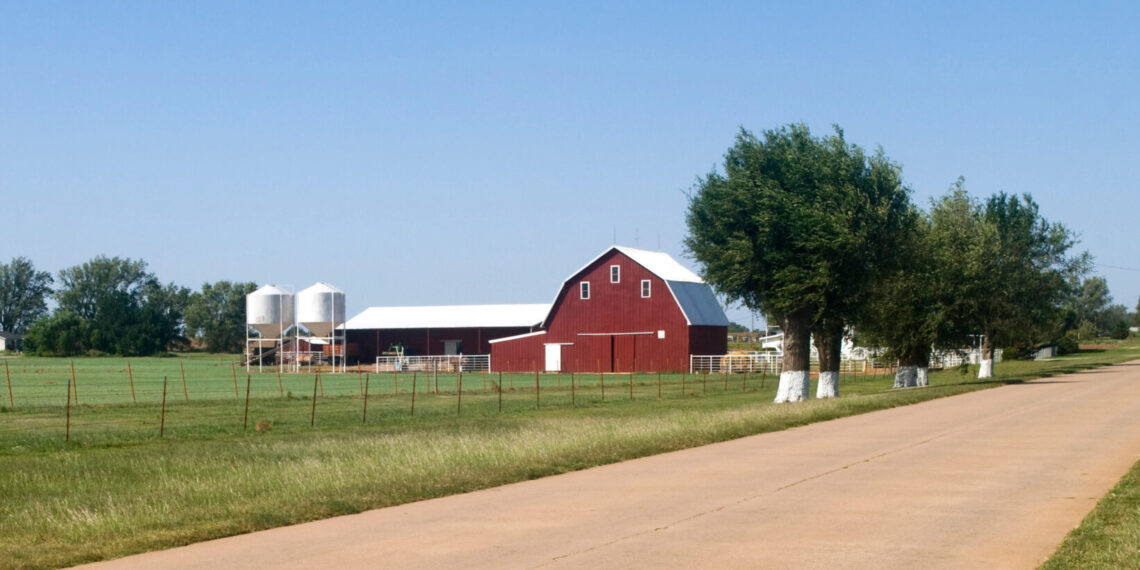OKLAHOMA CITY (OBV) – A pair of Oklahoma legislators led an interim study at the State Capitol recently, diving deep into healthcare challenges impacting rural Oklahomans.
The interim study was held before the House Public Health Committee on Oct. 10. Providing healthcare resources to rural communities was a central focus of the study, which was spearheaded by Rep. Daniel Pae, R-Lawton, and Rep. Arturo Alonso-Sandoval, D-Oklahoma City.
“A strong healthcare system is the backbone of a healthy economy, but when we fail to invest in rural healthcare, we fail our fellow Oklahomans,” Pae said. “Without providing the right resources today, rural hospitals will continue to close their doors. These difficulties won’t just go away if we ignore the problem or resolve themselves unless we take targeted investment and action.”
The study not only investigated the healthcare challenges experienced by rural Oklahomans but also explored potential solutions, according to officials with the Oklahoma House of Representatives.
“This interim study shed light on our current healthcare challenges and the immediate steps we can take to make a significant difference next session,” Alonso-Sandoval said. “As a representative of an urban district, I’ve seen how parts of our cities face healthcare access issues similar to our rural communities. It’s clear that addressing the lack of healthcare resources is crucial for all Oklahomans, no matter where they live. This study emphasized the importance in providing comprehensive solutions that ensure quality healthcare is accessible to every Oklahoman.”
Oklahoma spends $9,444 per capita on healthcare, whereas U.S. healthcare spending per capita was $10,191, according to Oklahoma Hospital Association (OHA).
Sean McAvoy, executive director of Primary Care Services for Comanche County Hospital Authority, spoke during the interim study and gave the following key reasons healthcare providers may choose to avoid rural areas:
- Rural areas lack facilities that meet healthcare standards, requiring construction of new healthcare facilities.
- Rural areas have a smaller workforce to recruit from, creating additional costs to recruit new hires.
- Rural areas with fewer employees mean fewer people with employer-sponsored healthcare, which typically pays better rates to healthcare providers.
The lack of transportation options in rural areas is also a healthcare challenge, especially for older adults, according to McAvoy. However, he cited telemedicine as an increasingly helpful tool for addressing certain healthcare concerns.
McAvoy also said mobile clinics can help expand care in rural areas quickly, but said they do have high operational costs.
The interim study also covered how rising hospital expenses factor into the issue.
Rich Rasmussen, president and CEO of OHA, spoke during the interim study about the operational challenges hospitals face. He said total expenses were $2 billion higher in 2023 than pre-pandemic due to rising labor costs, including contract labor expenses, and rising utility, drug and supply prices.
“The majority of hospitals dipped into their reserves to be able to cover operating costs,” Rasmussen said.
Oklahoma is ranked 49th nationally in healthcare outcomes, according to Melissa Alvillar, the chief nursing officer at Comanche County Memorial Hospital.
Alvillar spoke during the interim study.
“Hospitals such as ours are willing to grow and willing to add beds to facilitate the care that the rural environment needs, but we need the financial help to support that,” Alvillar said.
Healthcare providers need legislative support to give Oklahomans the care they deserve, Alvillar said.
“We have the ability to be higher in healthcare than 49th,” she said.
Difficult working conditions, including increases in physical assaults and threats against healthcare providers, make it harder to recruit and retain staff. As a result, the cost of staff pay and benefits to retain employees has went “through the roof,” further straining hospitals’ and clinics’ budgets.
Dr. Mark Woodring, vice chair of the Board of Rural Health Association of Oklahoma, cited recent data which shows that “most of Oklahoma is a health professional shortage area.” He suggested creating a healthcare rural opportunity zone pilot program to improve rural health outcomes, or offering state income tax exemptions or credits to providers who relocate.
“It’s creating maybe an additional incentive not to go into a specialty that’s going to pay them more,” Woodring said. “They know that certainly primary care, while competitive is not paying as much as a maybe a cardiologist or an orthopedic surgeon.”
Woodring brought a ray of light to the discussion, highlighting the recent groundbreaking of a new rural hospital in Tillman County. Residents in that area have been driving between 30 minutes to an hour to receive hospital-level care since the 2016 closure of Memorial Hospital and Physician Group in Frederick.
The upcoming Tillman County hospital is partially funded by federal American Rescue Plan Act (ARPA) money appropriated by the legislature.

















